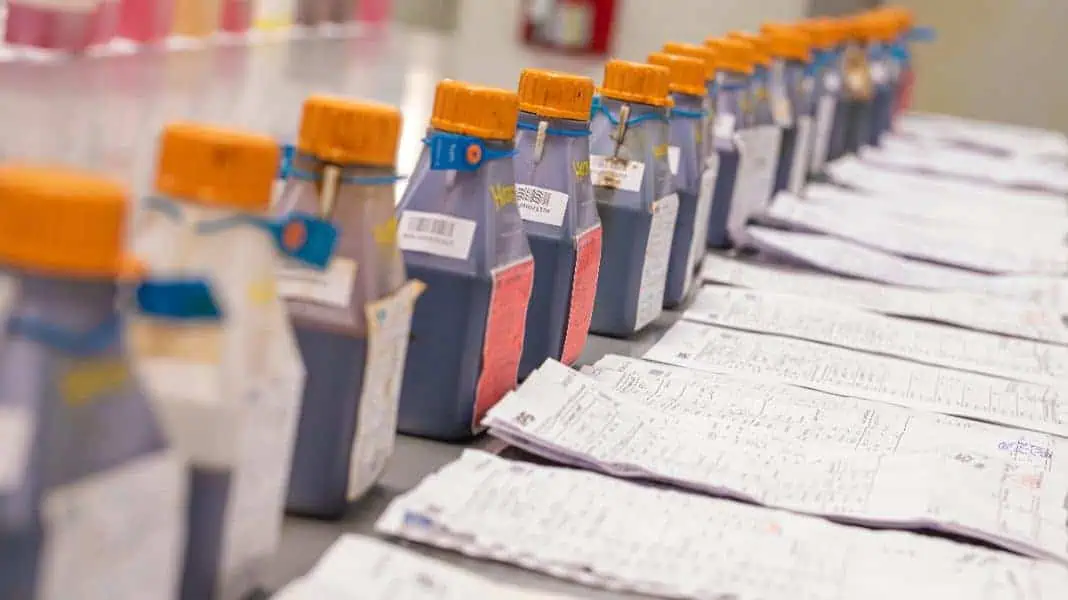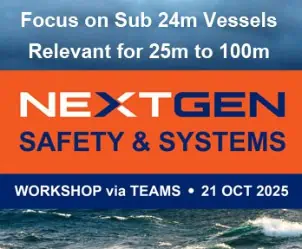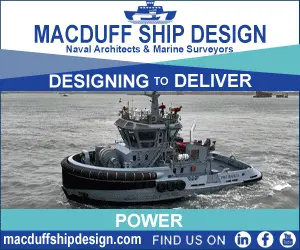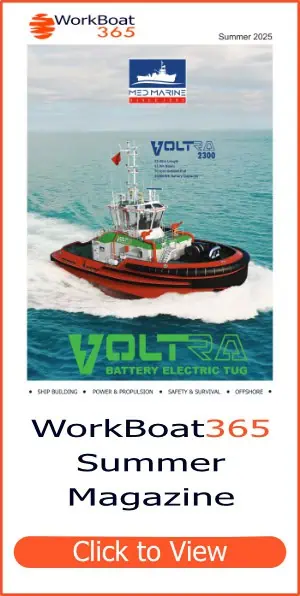Introduction
It is well reported that 3% of global emissions are attributed to world shipping and the entire industry is now on a drive to reduce emissions to net zero close to, or by 2050. At the recent MEPC 80 conference the IMO introduced additional interim checkpoints of 20% global greenhouse gas emissions reductions compared to 2008 but striving for 30% by 2030 with a 70% (striving for 80%) reduction by 2040[1]. On top of this the EU ETS scheme will be expanded in 2024 to include all vessels over 5000GT transporting general cargo or passengers with the share of emissions subject to the ETS being increased from 40% in 2024 to 70% in 2025 and 100% in 2026. In addition, methane and nitrous oxide emissions will be added to the EU ETS from 2026. Offshore vessels will also be added to the scheme from 2027.[2,3]
With all of these new requirements (and additional costs and complexity) for reporting emissions from vessels, operators and owners are now looking very closely at how to reduce their emissions. Some of this has been achieved from what can be done ‘today’ such as slow steaming, improving vessel design, air lubrication and reducing sulphur in fuels.
However, to meet the requirements of net -zero by 2050 and reduce the cost of paying for emissions the shipping industry is also looking at other means of decarbonisation including the use of digitalisation of onboard systems for optimal efficiency and advanced monitoring of stack/exhaust emissions. Although a lot has been done so far there is still a lot more to be done if shipping is to achieve net-zero by 2050.
One of the main ways to reduce emissions is not only to burn less fuel but to also look at alternative fuels that can help further reduce emissions and remove the need to burn fossil fuels. As an interim step some operators are looking at LNG as a fuel and installing dual fuel LNG engines on vessels. Although LNG significantly reduces emissions – up to 23% – compared to VLSFO on a well to wake basis it is still a fossil fuel.[4] LNG vessels also have the issue of methane slip and with methane being 25 times more potent than carbon dioxide[5] at trapping heat in the atmosphere, other vessel operators are looking to other alternative fuels such as methanol, ammonia and bio-fuels, especially with methane emissions becoming part of the EU ETS in 2026. These fuels can provide additional emissions savings compared to conventional fuels and LNG, but also offer their own challenges.
This article provides an insight from the VPS perspective based on our experience of testing the latest alternative fuels that are in use today aboard vessels operating around the world.
VPS Experience with new Alternative Fuels
FAME (fatty acid methyl esters) or more commonly referred to as biodiesel, has been used within the road transportation sector for cars, vans and trucks for many years. The composition of FAME is dependent on the feedstocks used in the manufacturing process and can vary greatly between each batch, between each supplier and where it is purchased around the world. FAME has one big advantage in that it is a ‘drop-in’ replacement for traditional fuels and can be used at varying amounts up to 100%. For example, a B30 fuel will be a blend of 30% FAME and 70% conventional fuel. Due to the changes in chemical structure between each FAME, its performance as a fuel can vary greatly too. Carbon chain length and degree of unsaturation can influence the cold flow properties, with the degree of unsaturation also influencing oxidation stability and oxygen content. The level of oxygen content has an influence on the energy content, which is already lower than for conventional marine fuels. As a result, VPS were able to develop a technique to fingerprint the FAME source which has proven to be a great addition to the testing used to support our customers. With the introduction of the EU ETS and with FAME having a zero CO2 emissions factor, being able to accurately measure FAME content in fuel will be an advantage to vessel owners and operators. Several test methods already exist for determining the level of FAME in biofuels (including ASTM D7371, ASTM D7963, EN14078 and EN14103) but all have their limitations. VPS have developed a new technique which has higher precision, repeatability and reproducibility over the whole range from B0 to B100, enabling vessel owners and operators to obtain the correct emissions allowances.
FAME, due to its partially oxidised nature compared to conventional hydrocarbon-based fuels is also susceptible to bacterial growth which can lead to sludge and increased acidity, which can then lead to other problems such as blocked filters and corrosion. Again, due to it partial oxidation and some of the esters in the fuel being unsaturated, FAME can have significantly reduced oxidation stability which can cause sludge, filter blocking, darkening, acidity increase, microbial growth and rancidity which will be noticed by a rancid odour.
All that said, FAME does provide an environmental benefit from a well to wake perspective and with careful management onboard should cause no issues in its use, especially in blends with conventional fuel. So far, many of the samples tested by VPS have been single samples for single vessels with an estimated in-use total of biofuel used so far in the region of 30-40KT/month (VPS estimation) which is just a small fraction of the monthly market volume for shipping fuels. Based on data from VPS PortStats, so far in in 2023 we have tested over 300 FAME or FAME- containing bunker samples, the most of which have been available in Europe (mainly Rotterdam), but also from the US and Asia (mainly Singapore). However, based on this testing so far, we are safe to assume that FAME containing fuels are on trial and there is high scrutiny on its performance in these trials as we would expect.
This is from both crew and technical level, where in extreme cases engine components are being inspected and merited/demerited after the trial, looking for any signs of issues. This is being done at great expense to the vessel operators. Further, the top management of ship owners and operators is involved with decarbonisation high on their agendas too. This naturally results in suppliers being cautious about what is being supplied with only top quality products being offered. Will this level of diligence be maintained if biofuels were to become a main marine fuel?
To support this, of the over 300 “bunker” samples tested in 2023, only 30 vessels (approx. 10%) took biofuel more than twice. Typically, from the stem sizes taken it appears the vessel will only have this fuel onboard for around 1 week before it is consumed, further suggesting FAME biofuels are currently on trial.
Probably the biggest factor holding back the adoption of FAME into marine fuel is the price which can be as much as twice the price of VLSFO[6] but with the introduction of the EU ETS in 2024 this cost will be off-set by the savings obtained by using FAME to increase the zero CO2 emissions allowance.
We have also seen other sources of material being used as options for fuel. HVO or hydrogenated vegetable oils is derived from waste oils from cooking and is highly processed and hydrogenated to remove any unsaturation and oxygen containing molecules like esters[7]. As such HVO is often referred to as renewable diesel and performs in a similar way to diesel. When comparing HVO with FAME we see higher energy content, good oxidation stability, superior cold-flow properties and little or no microbial growth. This is due to the fact the HVO is hydrogenated and any partial oxidation (as found with FAME) has been removed during the hydrogenation progress. Again, as with FAME, HVO has a higher price than tradition marine fuels of similar viscosity which could restrict its usage as a marine fuel.
Cashew nut shell liquid (CNSL) and tyre pyrolysis oil (TPO) have also been suggested as marine fuels either as a ‘B100’ or in blends. CNSL is highly acidic and contains very different molecules compared to FAME which are phenolic in nature. These phenolic molecules have many uses outside the marine industry but as a fuel they could be susceptible to polymerisation under the right conditions of heat and potential prolonged storage. However, in blends with traditional fuels CNSL could be suitable as a fuel but more testing is needed to confirm its suitability. TPO is a relatively new technology and further testing is needed to prove its suitability as a marine fuel.
One fuel that is gaining a lot of attention is methanol. Unlike other fuels, it is almost entirely made up of a single molecule. It is readily available and can be manufactured from environmentally accepted sources. It also contains no sulphur and so significantly improves SOx emissions to very low levels. NOx emissions can also be reduced by up to 80% compared to conventional marine fuels.[8] As with other alternative fuels price is a consideration for methanol especially as it has a round 2/3 the energy density of traditional fuels. Methanol is also classed as dangerous goods and has a low flash point so increased safety measures are needed when handling and shipping methanol.
VPS were recently involved in the very first bunkering of methanol in Singapore both for Bunker Quantity surveys (BQS) and Fuel Quality Testing (FQT)[9]. Following the successful bunkering operation, the fuel samples were tested and were a close match with the fuel quality that was supplied to the ship from the bunker vessel via a shore tank. Currently there are no industry specifications for the use of methanol as a fuel, but these are under development. There is a specification from IMPCA[10] (International Methanol Producers and Consumers Association) which is being used as the benchmark specification for methanol as a marine fuel as the industry gains experience. Subsequently, VPS were involved with the bunker surveying of the same vessel in Port Said and Rotterdam as it sailed to its final destination in Denmark. VPS also undertook the analysis of the methanol fuel on all 3 occasions.
Over the next few years the number of vessels being fuelled by methanol is due to increase significantly and several new plants for producing bio-methanol are planned or under construction in support of the marine industry. Currently the vessel order book as of August 2023 [11] shows 161 vessels on order which is about 7.6% of all vessels on order. This is up from 95 vessels on order in July 2023.
Conclusion
The maritime industry is current working to reduce emissions to meet the IMO target of net-zero on or around 2050. There have been lots of measures adopted over the last few years to improve fuel efficiency and reduce emissions. This has included slow steaming, vessel design, air lubrication etc. However, all of these methods still involve the use of fossil fuels. So, the next step is to start using alternative fuels with significantly reduced or even zero carbon footprints. This has started with many new builds and some retrofits on vessel with dual fuel engines allowing the use of alternative fuels such as methanol.
In the future we will also start to see other fuels being used and there is a lot of current research ongoing around the use of ammonia as a zero-carbon fuel and also some consideration around the use of nuclear energy to power vessels.
VPS are also leading the way with the testing of these new alternatives fuels but are also working with vessel owners and operators to maximise their efficiency via their Maress technology and then also continuous emissions monitoring through their unique Emsys system. This gives an overall picture of energy-in via the fuel, monitoring of energy use and then quantifying the emissions from the vessel. In effect this shows how and where all the energy from the fuel has been used on the vessel.
With the EU ETS expansion in 2024 and the need to reduce emissions in shipping, VPS are leading the way in the analysis of new alternative fuels to support our customers in assisting them in meeting their emission reduction targets whilst making sure these fuels are fit for purpose. Coupled with our new and innovative digital technologies for optimised vessel operations and continuous exhaust emissions monitoring, VPS are perfectly positioned to provide a wide range of maritime decarbonisation services to the global fleet.
By Dr Nick Clague, Head of Sustainable Fuels, VPS
References
1. UK P&I Club – News and Resources – ’MEPC 80 A Summary’
2. DNV Technical and Regulatory News NO.02/2023 – Statutory ‘EU ETS : Preliminary Agreement to include shipping in the EU’s Emissions trading system from 2024’
3. European Commission – Climate Action – ‘Reducing emissions from the shipping sector’
4. Shell Global – Energy and Innovation – ‘LNG – fuel in transition’
5. United States Environmental Protection Agency – ‘Importance of Methanol’
6. Neste – investors market data – ‘biodiesel prices, SME, FAME’
7. Neste Renewable Diesel Handbook
8. Methanex – ‘Methanol as a Marine Fuel’
9. VPS Press Release – ‘VPS Completes the First Methanol Bunker Quantity Survey’
10. IMPCA Methanol Reference Specifications Version 9 10 Jun 2021
11. Clarkson’s World Fleet Register – ‘Environmental & regulatory News: August 2023’











